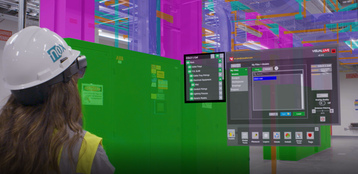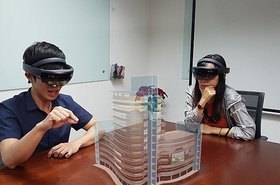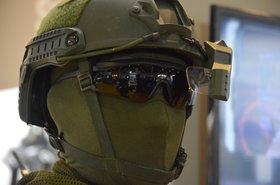Microsoft's cloud operations team is using HoloLens 2 augmented reality glasses to conduct audits remotely, allowing them to comply with Covid-19 precautions and cut the time and expense of the audit process.
The Cloud Operations & Innovation adopted Microsoft Dynamics 365 Remote Assist on HoloLens 2, using the system to streamline and simplify the work of staff who carry out audits to check the Azure platform complies with numerous standards such as the PCI data security specifications.
AR keeps Azure at arm's length
"Data center compliance audits have historically been time, cost, and travel intensive," said the Microsoft announcement. "They required external auditors and Microsoft supervisors to circumnavigate the globe, going through facilities meticulously to verify that the physical plant, staff, and data operations meet all the requirements enumerated in the compliance standard. Microsoft staff members who specialize in data center compliance used to spend much of their time on the road, often together with auditors, preparing for and facilitating the actual audits."
Microsoft was already looking for ways to reduce the travel burden and give staff a better work-life balance, when Covid-19 struck, shutting down travel and limiting visits to data centers.
HoloLens is a mixed reality device, which superimposes annotations such as charts, text, guides, and images superimposed on a remote view. The system also includes speakers and a microphone so the wearer can converse with other staff at the actual site.
One staff member would wear the device on site, and a remote expert can directly see what the wearer is seeing, in real-time, and provide support mixed reality 3D annotations from anywhere in the world.
Without the device, a remote audit would have required data center staff to compile videos, photos, and other materials that demonstrate all the features and functionality of the data center, and share them through conventional means. Even small details like door locking mechanisms have to be carefully documented and checked by auditors to ensure a building is physically secure. It's simpler for a staff member onsite wearing the HoloLens to demonstrate the procedure while an auditor watches remotely.
“I like the ability to share my perspective and still have my hands free to do something else, unlike if I were trying to hold a camera or phone to shoot a video,” says Eric McAllister, data center project manager at Microsoft's Des Moines data center. “Using Dynamics 365 Remote Assist on HoloLens 2 gives me that freedom.”
Scripted in advance
An auditor can make requests in real time during a remote audit, but the process is generally scripted in advance: “The number one word for us in the compliance world is consistency,” says Dennis King, senior program manager. “The more we can establish regular ways of doing things, the more likely that remote audits will become mainstream, even after Covid-19 restrictions are lifted.”
“We all thought Dynamics 365 Remote Assist on HoloLens 2 was great, and everyone wanted to be involved,” says Lee Moscal, senior program manager. “But we realized that this approach wouldn’t work for us unless we got buy-in from our auditors—it’s their professional reputation on the line when they conduct an audit. So, we partnered with them to figure out the best way to use it in a remote auditing situation.”
Of course, for compliance audits Microsoft had to make sure the HoloLens itself passed security checks, and could be used in sensitive areas within a data center. “Our security team put HoloLens 2 through a thorough 10-point security checklist and deemed it to be a Zero Trust device,” says Laura Riley, business program manager – cloud operations & innovation at Microsoft. “That means it’s okay to bring into data centers, which was pivotal to the success of the project and the confidence the auditors have in our processes.”
Microsoft reports that the project has decreased the audit life-cycle time and cost, as well as cutting travel-related carbon emissions, while restoring work-life balance for employees.




